Photo Gallery: Colourful Sea Creatures
By National Geographic, 15 May 2012.
Discover the beauty that lies under the world’s waters…
| 1. White Anemone and Sea Star |
 |
|
The creatures that inhabit the world’s oceans run the full spectrum of colours - often in intricate patterns, advanced camouflage, and varying degrees of transparency.
Here, a white sea anemone keeps company with a sea star in the waters off British Columbia. There are more than a thousand sea anemone species. The invertebrate takes its name from the equally flashy terrestrial anemone flower.
|
| 2. Blue Tang |
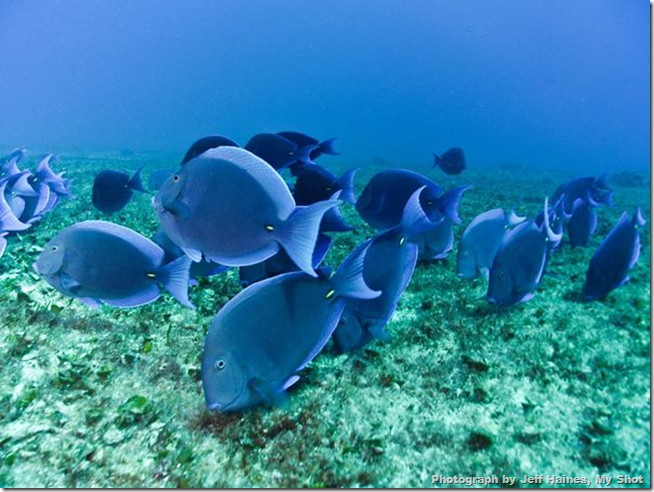 |
|
Adult blue tangs swim close to the ocean floor near Mexico. A species of surgeonfish, the blue tang is abundant in the waters of the Caribbean, often schooling around coral reefs. As they mature, the tangs' colour progresses from bright yellow to a deep bluish-grey or purple.
|
| 3. Clownfish and Anemone |
 |
A clownfish is at home between the stinging tentacles of an anemone, which protects the boldly coloured reef dweller and its eggs from intruders. Bound in an alliance of mutual benefit, clownfish spend their entire lives with their host anemones, rarely straying more than a few yards from them.
|
| 4. Mantis Shrimp |
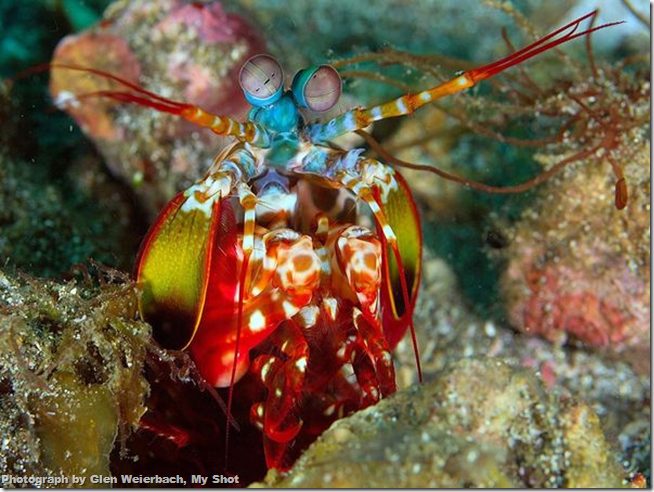 |
|
This otherworldly creature, a mantis shrimp, was photographed in the waters of Indonesia's Lembeh Strait. The shrimp feeds by smashing open its prey with a force that can break a pane of glass, and its darting bulbous eyes are thought to be the most complex in nature.
|
| 5. Regal Angelfish |
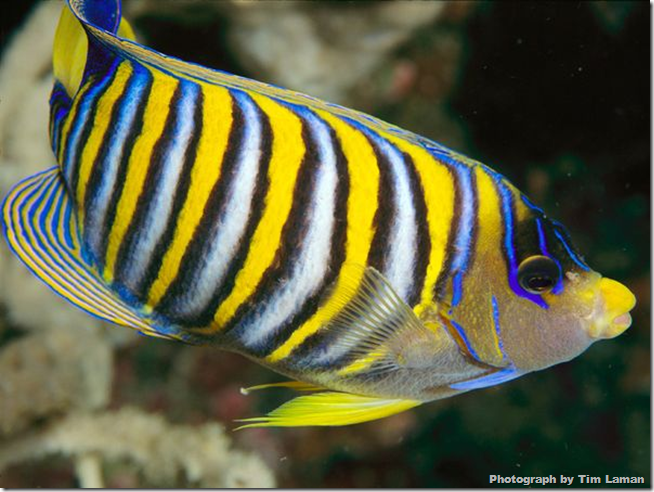 |
A regal angelfish attracts the eye with alternating bands of striking colour on its body and fins. The solitary reef fish often travels alone or in pairs and favours a diet of sponges and sea squirts.
|
| 6. Flower Hat Jelly |
 |
It might be alluring, but a rare flower hat jelly’s lilac-tipped fringe can deliver a painful sting. Found off Brazil, Argentina, and southern Japan, the jelly’s tentacles can coil and uncoil and are used to capture small fish and other food.
|
| 7. Sea Anemone |
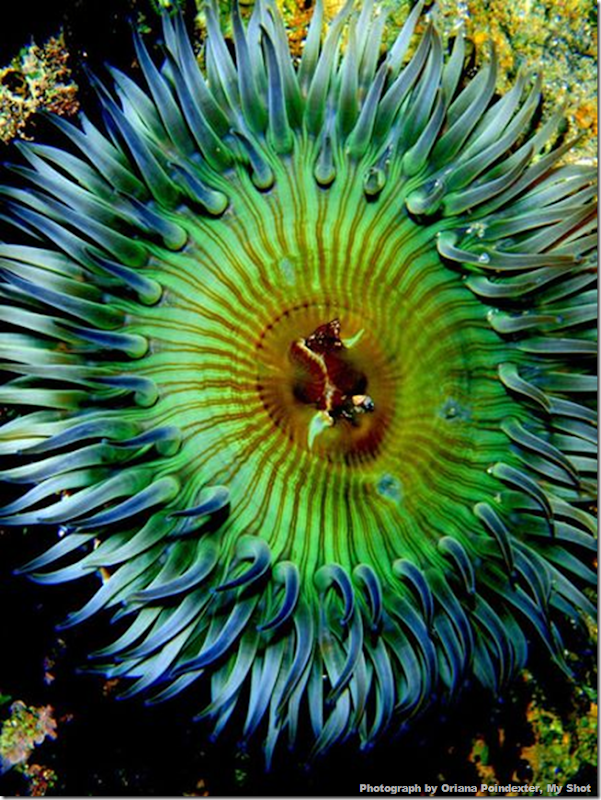 |
Resembling a sunflower, a sea anemone appears deceptively benign. A close relative of coral and jellyfish, anemones are stinging polyps that spend most of their time waiting for fish to pass close enough to get ensnared in their venom-filled tentacles.
|
| 8. Sea Stars |
 |
Popularly known as starfish, sea stars are actually echinoderms, closely related to sea urchins and sand dollars. There are some 2,000 species of sea stars living in the world’s oceans, and many wear striking colours that provide camouflage or warn off predators.
|
| 9. Christmas Tree Worms |
 |
Christmas tree worms shelter a goby (at left) in their coral reef habitat. Coral reefs thrive in the clear, shallow coastal waters of tropical seas.
|
| 10. Lined Chiton |
 |
A type of mollusk, the lined chiton has colourful lines on its valves and white or yellow spots or bands on its girdle. The chiton’s pink background camouflages it from predators as it feeds on coralline algae.
|
| 11. Parrotfish |
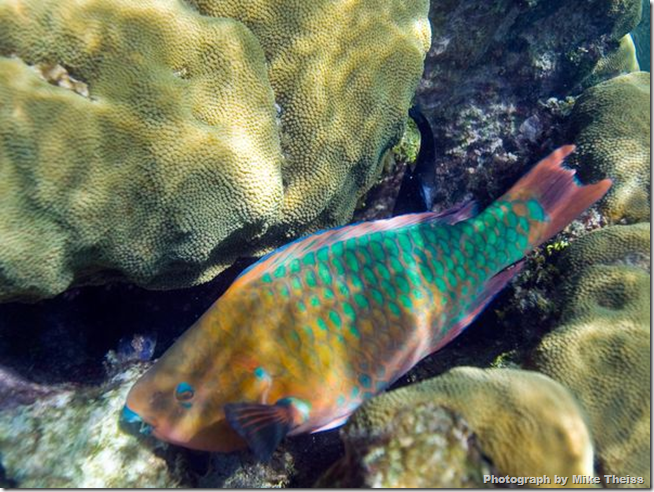 |
Abundant in and around the world’s tropical reefs, the parrotfish is known to change its shape, colour, and even gender during its lifetime.
|
| 12. Mating Nudibranchs |
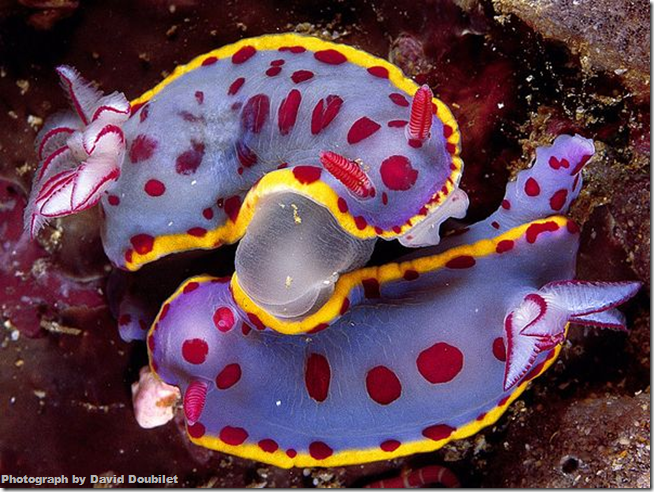 |
The bright, contrasting hues of mating nudibranchs - sea slugs found in reefs and the deep ocean - warn potential predators of their venomous, unpalatable flesh. Equipped with both male and female reproductive organs, each nudibranch fertilizes the other, and both produce eggs.
|
[Source: National Geographic. Edited. Top image added.]



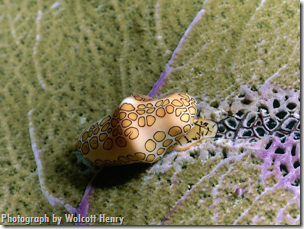










No comments:
Post a Comment
Please adhere to proper blog etiquette when posting your comments. This blog owner will exercise his absolution discretion in allowing or rejecting any comments that are deemed seditious, defamatory, libelous, racist, vulgar, insulting, and other remarks that exhibit similar characteristics. If you insist on using anonymous comments, please write your name or other IDs at the end of your message.